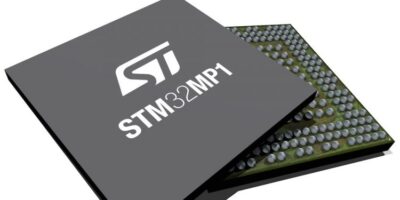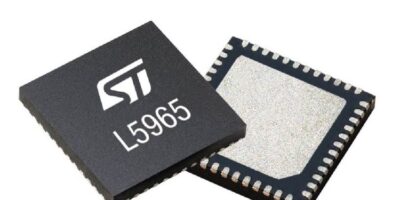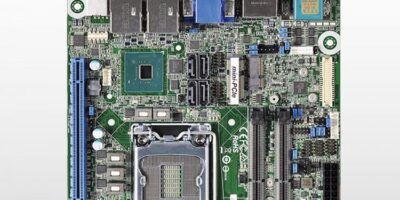System memory for the recently introduced STM32MP1 multi-core microprocessor series includes compute and graphics support combined with power-efficient real-time control. The aim is to aid the development of high-performance solutions for industrial, consumer, smart home, health and wellness applications.
Rutronik UK has combined STM32MP1 technology with approved technology partners Nanya in the form of a 4Gbit DDR3L SDRAM 16-bit and also Toshiba Memory’s 4GByte eMMC. The multi-core microprocessors and the memories, recommended by ST, are available from the distributor.
Engineers can used the STM32MP1 microprocessor series to develop a range of applications using the new heterogeneous architecture that combines up to two Arm Cortex-A7 and a Cortex-M4 core. This flexible architecture performs fast processing and real-time tasks on a single chip, always achieving the greatest power efficiency, reports Rutronik UK. The STM32MP1 embeds a 3D graphics processor unit (GPU) to support human machine interface (HMI) displays.
Rutronik also offers an evaluation board, the STM32MP157C-EV1 and two Discovery kits, the STM32MP157A-DK1 and STM32MP157C-DK2.
A firmware package, STM32CubeMX, is designed for software and hardware configuration of both the Cortex-A7 and Cortex-M4 cores. It handles C-code generation for the M4 core, DDR SDRAM interface configuration, and tuning tool. It can also generate Linux device trees.
Rutronik UK operates as an independent company in the UK. Its parent company, Rutronik Elektronische Bauelemente, is a broadline distributor for semiconductors, passive and electromechanical components in addition to storage technologies, displays and boards and wireless products. The markets that the company primarily targets include automotive, medical, industrial, home appliance, energy and lighting. It also offers support in the areas of product development and design, individual logistics and supply chain management.






